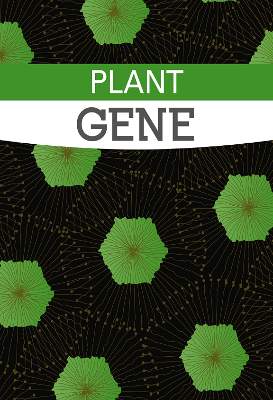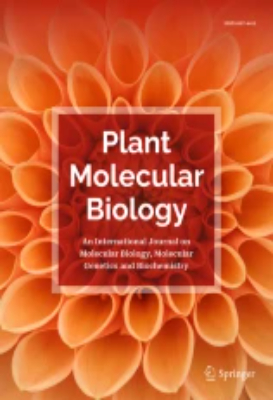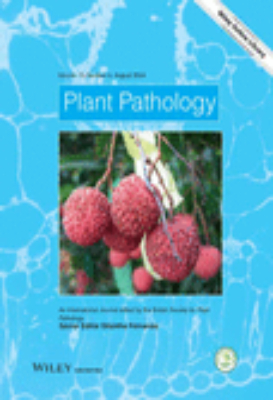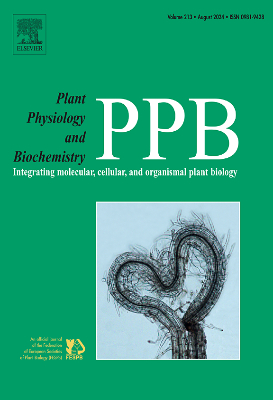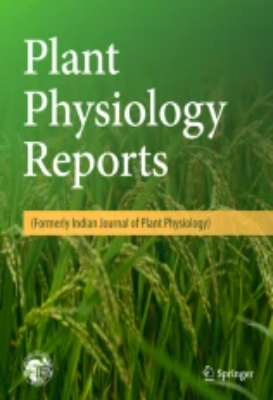Agricultural Science
Plant Geography
Plant Geography: With Special Reference to North America covers main concepts of the two major approaches to plant geography, namely, the floristic plant geography and the ecologic plant geography. Floristic plant geography primarily studies evolutionary divergence, migration, and decline of taxa, as influenced by past events of the earths history. Ecologic plant geography is an alternative approach to plant geography, which takes plant communities as units having ranges to be interpreted, dominated by sociologic and physiologic, rather than phylogenetic and historic considerations. Under the floristic plant geography part, topics covered include interrelations among floristic plant geography, taxonomy, and geology; the relation between plant dissemination and migration; evidence of the dynamic character of plant ranges; and migratory route. After a brief introduction to the evolution of North and South America vegetation, the book discusses the ecologic plant geography section that focuses on various vegetation regions in North America, including Tundra, subarctic-subalpine forest, temperate mesophytic, xerophytic forest, and chaparral and steppe regions and temperate affinity forests in Middle America. Other regions examined include the desert and marine regions, as well as the microphyllous woodland, tropical savanna, rain forest, and tropical alpine. With great information on geologic history of each vegetation unit and paleontology, this book will be helpful to paleobotanists, historical geologists, and taxonomists.
Plant Growth and Development
This book provides current information on synthesis of plant hormones, how their concentrations are regulated, and how they modulate various plant processes. It details how plants sense and tolerate such factors as drought, salinity, and cold temperature, factors that limit plant productivity on earth. It also explains how plants sense two other environmental signals, light and gravity, and modify their developmental patterns in response to those signals. This book takes the reader from basic concepts to the most up-to-date thinking on these topics. Key Features @bul:* Provides clear synthesis and review of hormonal and environmental regulation of plant growth and development* Contains more than 600 illustrations supplementary information on techniques and/or related topics of interest* Single-authored text provides uniformity of presentation and integration of the subject matter* References listed alphabetically in each section
Plant Metabolism
Plant Metabolism, Second Edition focuses on the processes, principles, and methodologies involved in the metabolism of higher plants. The book first elaborates on cell structure and function, enzymes, and catabolism. Discussions focus on the control of respiration, conservation of the energy liberated in respiration, chemical pathways of respiration, enzymes in the living cell, prosthetic groups and coenzymes, protein nature of enzymes, general structure of plant cells, and osmotic behavior of cells. The manuscript then tackles anabolism and secondary plant products. Topics include phenylpropanoids, flavonoids, isoprenoid compounds, assimilation of nitrogen and sulfur, synthesis of sucrose and polysaccharides, location of the photosynthetic apparatus, influence of external factors on the rate of photosynthesis, and general nature of photosynthesis. The text takes a look at growth and differentiation, absorption, secretion, and translocation, secondary plant products, and regulation of metabolism. The publication is a valuable source of data for plant science experts and researchers interested in plant metabolism.
Plant Nonprotein Amino and Imino Acids
Plant Nonprotein Amino and Imino Acids: Biological, Biochemical, and Toxicological Properties provides a comprehensive discussion of plant nonprotein amino acids. Much of this monograph is written with the neophyte in mind, thus necessitating the presentation of certain basic concepts that are well-known to the advanced worker. Rather than providing an exhaustive coverage of the subject matter, the book attempts to represent effectively the state of the art; to provide a helpful means of identifying and locating the pertinent literature; and to present the basic information necessary to encourage other workers to enter into the study of the nonprotein amino acids. The book begins with a review of nomenclature and physicochemical properties. This is followed by a discussion of analytical methods such as partition paper chromatography, thin-layer chromatography, ninhydrin color reaction, ion-exchange chromatography, and gas chromatography. Subsequent chapters deal with the toxicity of some nonprotein amino acids and their ability to exert debilitating effects in a host of organisms; and the intermediary metabolism of nonprotein amino acids.
Plant Parasitic Nematodes
Plant Parasitic Nematodes, Volume III provides a comprehensive discussion of the different advances in plant nematology. This includes biochemical techniques to taxonomy and innovation in transmission and scanning electron microscopy technology. It explains a broadened basis for understanding nematode physiology and behavior and the sensory mechanisms that govern nematode actions and plant host-nematode interactions. The book discusses the development of modern approaches to the evaluation and reduction of crop losses. The emphasis of this volume is on plant parasites and insights gained through research on other nematodes. In particular, the book explains the anatomical, developmental, behavioral, and genetic studies on the free-living nematode Cenorhabditis elegans, which is a widely used laboratory model for examining various biological problems. The information provided by various researches on C. elegans increases our understanding about the relevance of nematodes to general biological processes in higher organisms, including man. The book is divided into 19 chapters which cover the following concepts of plant nematology: biochemistry, cytochemistry, and genetics; morphology and function; host-parasite relations; and evaluation and control of crop losses. The present volume is an excellent reference for students, lecturers, and research professionals in plant parasitology and related fields.
Plant Pathology: 1969
Plant Pathology presents information and advances in plant pathology including disease induction and development and disease resistance and control. This book is organized into two major parts encompassing 14 chapters that focus on diseases, pathogenicity, and pathogen variability. The first part of the book deals with general considerations of disease, the disease cycle, parasitism and pathogenicity, and the variability in pathogens. This is followed by a presentation of the mechanisms by which pathogens cause disease and plants resist disease. Core chapters focus on the effects of pathogen-produced enzymes, toxins, growth regulators, and polysaccharides on the structural organization and on the basic physiological processes of photosynthesis, translocation, and respiration. The chapters also discuss the defense mechanisms of the plant. Moreover, this book explains the genetics of host-parasite interaction, effects of environment on disease development, and control. The second part of the book deals with the infectious diseases caused by fungi, bacteria, parasitic higher plants, viruses, and nematodes. This part also looks into the noninfectious diseases caused by environmental factors. The diseases caused by each type of pathogen are discussed comprehensively as a group and are subsequently discussed individually in detail. This book includes diagrams of cycles for each disease to create visual images for better understanding of the disease and message retention. This book is ideal for students with introductory course in plant pathology.
Plant Pathology: 1978
Plant Pathology, Second Edition incorporates developments in identifying pathogens and disease diagnosis. This book is organized into two major parts encompassing 16 chapters that discuss general aspects of plant diseases and specific plant diseases caused by various microorganisms. This edition includes chapters or sections on diseases caused by mycoplasma-like organisms, rickettsia-like bacteria, viroids, and protozoa. Information on the genetics of plant diseases, the development of resistant varieties, and their vulnerability to new pathogen races is added in this release. It also includes information on the development of epidemics. The presentation of these topics is followed by a discussion on systemic fungicides and biological control of diseases, as well as postharvest diseases of plant products. Furthermore, this edition also explains mycotoxins and mycotoxicoses, as well as techniques of isolation, culturing, indexing, and identification of pathogens. It also studies mycorrhiza and root-nodule bacteria. Considerable chapters describe diseases caused by fungi and those caused by bacteria, which have been organized in logical, cohesive groups according to their most important symptoms. Diagrams of disease cycles, groups of pathogens and symptoms, and techniques and concepts of plant pathology are incorporated in each chapter. Moreover, this edition provides numerous photographs (macroscopic, microscopic, electron micrographs, and scanning electron micrographs) that illustrate concepts, pathogens, and symptoms. Teachers and students who are interested in plant pathology and plant diseases and control will find this book very helpful.
Plant Pathology: 1988
Plant Pathology, Third Edition, provides an introduction to the fundamental concepts of plant pathology, incorporating important new developments in the field. The present volume also follows closely the organization and format of the Second Edition. It includes two new chapters, ""Plant Disease Epidemiology"" and ""Applications of Biotechnology in Plant Pathology."" Extensively updated new information has been added about the history of plant pathology, the stages in the development of disease, the chemical weapons of attack by pathogens, and the genetics of plant disease. The book is organized into three parts. Part I discusses basic concepts such as classification of plant diseases; parasitism and disease development; how pathogens attack plants; effects of pathogens on plant physiology; plant defenses against pathogens; and genetics, epidemiology, and control of plant diseases. Part II on specific plant diseases covers diseases caused by fungi, prokaryotes, parasitic higher plants, viruses, nematodes, and flagellate protozoa. Part III deals with applications of biotechnology in plant pathology.
Plant Pathology: Volume I
Plant Pathology: An Advanced Treatise, Volume I: The Diseased Plant presents an integrated synthesis of the scope, importance, and history of plant pathology, emphasizing the concept of disease, not of diseases. The book focuses on pathological processes, defense devices, predisposition, and therapy of the diseased plant. It explores the normal pathways that are obstructed in sick plants; how the pathogen causes dysfunction; and how the host plant reacts to the pathogen. This book also considers the logistics and the strategy of disease and how to combat it. This volume is organized into 15 chapters and begins with an overview of plant pathology, its history, and its relation to other sciences, along with plant predisposition to disease, and the resistance-susceptibility problem. The next chapters examine how sickness in plants is recognized and diagnosed, the tissue breakdown in diseases, and the effects of parasites on the processes in plants. The impact of disease on water balance and respiration in plants and the histology of disease resistance in plants are also explained. This volume also covers the physiological and chemical basis of defense by higher plants against potential or invading pathogens and the hypersensitivity concept in plant pathology. The final chapter discusses the physical and chemical therapy of the diseased plant. This book will appeal to all who are interested in a theoretical treatment of plant pathology and in the broad ecological relationships among organisms, as well as to research workers and advanced students of applied biology.
Plant Pathology: Volume III
Plant Pathology: An Advanced Treatise, Volume III: The Diseased Population Epidemics and Control deals with the epidemics of the diseased population of plants and their forecasting and control. The book highlights the public health implications of plant pathology, giving major consideration to inoculum production, dispersal, and control. This volume is organized into 14 chapters and begins with an overview of populations of inoculum and the consequences of cultivation, emphasizing the inoculum potential. The next chapters focus on the autonomous dispersal of plant pathogens through the soil, seeds, or plant parts; the inoculum dispersal by animals, humans, air, and water; and the factors and processes that trigger an epidemic. The book also introduces the reader to the physical, chemical, and biological aspects of the performance of fungicides on plants and in soil, and then concludes by discussing the genetics of disease resistance and problems associated with plant breeding. This book is a valuable resource for those who are interested in a theoretical treatment of plant pathology and in the broad ecological relationships among organisms, as well as for research workers and advanced students of applied biology.
Plant Peroxisomes
Plant Peroxisomes deals with the biogenesis of plant peroxisomes and its relevance to the proposed model for peroxisome biogenesis in germinated seeds. The book is divided into seven chapters that discuss the history, cytochemistry, morphology, properties, isolation, metabolism, enzymology, and ontogeny of plant peroxisomes. The book first explains how advances in electron microscopy and cell fractionation studies have led to the detection of peroxisome. The subsequent chapters discuss the types and metabolic functions of plant peroxisomes and the cytochemical procedures for establishing the localization of specific enzymes and for analyzing peroxisome distribution in nonflowering plants, algae, and fungi. A chapter presents methods of peroxisome isolation from various tissues and the physical and chemical properties of the isolated organelles. Considerable chapters are devoted to the metabolic functions, enzymatic activities, development of their form, and biochemistry of peroxisomes. Several key enzymes of the glycolate pathway of photorespiration found in leaf peroxisomes are presented. A discussion on the physiology of plant peroxisomes is provided. This book will be of value to professional scientists and graduate students concerned with plant metabolism and development.
Plant Pests and their Control
Plant Pests and their Control, Revised Edition discusses the concepts involved in pest management, along with its application, constraints, and opportunities. This book is comprised of 13 chapters that cover topics relevant in understanding the basis and practice of pest management. The first six chapters deal with the various aspects of entomology. These chapters cover the importance of insects; the physiological properties of insects; and reproduction and life cycle. The next chapter covers the non-insect pests. Chapter 8 discusses the relationship between insects and plants, while Chapter 9 covers the mortality factors of insect, such as predators, parasites, and pathogens. The next chapter presents the ecological background of pest control. The remaining three chapters discuss pest management itself. This text will be of great use to agriculturists, horticulturalists, and pest control professionals. Household owners dealing with residential pest infestation will also find this book a great source of information.
Plant Physiology: 1969
Plant Physiology: A Treatise, Volume VB: Analysis of Growth: The Responses of Cells and Tissues in Culture deals with the innate capacities for growth that reside in mature organs, tissues, and cells of higher plants. The book examines the various ways, normal and abnormal, in which surviving organs, tissues, or cells from plants may grow, metabolize, and develop. The text will be of value to botanists, horticulturists, and biologists.
Plant Physiology: 1971
Plant Physiology: A Treatise, Volume VIA: Physiology of Development: Plants and Their Reproduction explores the various problems of development and reproduction that arise as plants, responsive to environmental stimuli, develop a vegetative plant body and produce seeds and fruits or organs of perennation. This book considers the morphological aspects of plant growth and development as well as the growth and reproduction of fungi, physiological aspects of vegetative reproduction and flowering, and perennation and dormancy. This volume is organized into four chapters and begins with an overview of growth and development, with reference to organization and patterns of development in vascular plants and the initiation and development of plants. The discussion then shifts to vegetative, sexual, and asexual reproduction in fungi, along with heterokaryosis and morphogenesis. The next chapter explores reproduction in plant biology, focusing on vegetative and sexual reproduction, sex determination, and photoperiodism. This book concludes by considering the physiological mechanisms underlying the production of organs of perennation and the establishment of dormancy. This text will be of value both to graduate students and to established investigators with specific interest in plant physiology.
Plant Physiology: Volume VIB
Plant Physiology: A Treatise, Volume VIB: Physiology of Development: The Hormones focuses on the history and status of the hormone concept in plant physiology. This book considers the responses of plant cells, tissues, and organs to regulatory substances that may be naturally occurring, exogenously applied, or even synthetic in their origin. References to auxins and other plant hormones, or regulatory substances, are made throughout at levels that extend from cell division and cell enlargement, cell physiology and metabolism, to morphogenesis and reproduction. This volume begins with an introduction to naturally occurring plant hormones ranging from auxins to gibberellins, cytokinins, and ethylene. This book also looks at some of the clearest and best studied cases where growth is controlled by interactions between two or more hormones. The concept of hormone action in plants is discussed, along with methods of auxin bioassay and the nature and metabolism of indole auxins. The physiological actions, transport, and mode of action of auxins are described, followed by an overview of naturally occurring growth inhibitors such as phenols, flavonoids, and abscisic acid. This book is intended for researchers, students, and specialists in related fields who wish to gain insight on the concepts and research trends in plant hormones.
Plant Physiology: Volume VIC
Plant Physiology: A Treatise, Volume VIC: Physiology of Development: From Seeds to Sexuality deals with the physiology of development in angiosperms, from seeds to sexuality. This book treats germination and cell division, growth, and development from a single point of view, emphasizing the problems of early development in flowering plants. This volume begins with an introduction to the process of germination, focusing on the dispersal unit that emerges at some stage in the life cycle of plants, seed viability and dormancy, and properties of seed components. The following chapters discuss cell division in higher plants, the importance of cell expansion for the growth of the whole plant, and the sexuality of angiosperms. Topics such as meiosis in the anther and the ovule, male spores and gametophytes, and the embryo sac are discussed in detail. This book concludes with problems that arise, and points of view that emerge, as development is considered in the light of genetics. This book is a valuable resource for researchers, students, and specialists in related fields who wish to gain insights on the concepts and research trends in the physiology of development in flowering plants.
Plant Physiology: Volumn IX
Plant Physiology: A Treatise, Volume IX: Water and Solutes in Plants explores problems associated with water and solutes of plants as they grow. This book considers water relations of plant cells, along with transpiration and water balance, the physiology of stomata, ion uptake by roots from the soil, and salt relations of plants. This volume is organized into seven chapters and begins with an introduction to the water potential terminology used by plant physiologists in describing the water relations of plant communities, individual plants and their organs, and plant cells. An account of the elastic properties and hydraulic conductivity of plant cell walls is provided. The following chapters focus on the soil-plant-atmosphere continuum, water uptake and movement through plants, the effects of water deficit on plant development and other processes, and the mechanics of stomatal functioning. The book also introduces the reader to salt relations of plant cells, tissues, and roots as well as long-distance transport in the phloem, and then concludes by discussing the solute composition of cells during development. This book is a valuable resource for teachers, research workers, and students with specific interest in plant physiology.
Plant Physiology: Volumn VIII
Plant Physiology: A Treatise, Volume VIII: Nitrogen Metabolism focuses on the physiological aspects of nitrogen metabolism in plants. This book considers the descriptive biochemistry by which nitrogen compounds and their reactions are recognized; the way the feasible reactions are assembled into metabolic pathways and cycles that give meaningful purpose and direction to the course of metabolism; and the ongoing fate of nitrogen compounds in relation to ontogeny, growth, and development. This volume is organized into four chapters and begins with an introduction to developments in basic and applied biological nitrogen fixation, focusing on the agriculturally important mechanisms by which atmospheric nitrogen is converted to plant protein. The biology and biochemistry of nitrogen-fixing associations and their practical application in agriculture are discussed, along with nitrogen metabolism in the context of various actual situations in which cells divide and grow and specific plants develop, mature, and reproduce. The next chapter deals with the metabolism and turnover of proteins, citing specific proteins (the enzymes ribulosebisphosphate carboxylase and nitrate reductase and seed protein) as the type cases to illustrate the fate of special proteins through their formation and turnover. The mechanisms and biological settings of protein degradation, as distinct from breakdown during protein turnover, are also covered in detail. This book is intended for teachers, research workers, and students with specific interest in plant physiology.
Plant Physiology: Volumn X
Plant Physiology: A Treatise, Volume X: Growth and Development explores the physiology of plant growth and development, considering the morphogenesis and morphogenetic systems, dormancy, environmental cues in plant growth and development, plant senescence, the role of hormones in growth regulation, cell division, and growth and development in space. This volume is organized into eight chapters and begins with an introduction to morphogenesis as a developmental phenotype, emphasizing the cell and the shoot. The next chapters cover events in the life of the plant, reflecting the importance of the whole plant concept to the subject, and the ways in which these events are controlled and integrated into environmental signals and events. An experimental approach to a model system for dormancy is described, and then the discussion shifts to senescence and death of plants as aspects of plant development. This volume also presents a clear and illuminating overview of the major plant growth regulators and their modes of action. This book also introduces the reader to cell division and its effect on most major developmental events after fertilization, along with the genetic analysis of development and its control by genes. The final chapter focuses on the integration of plant growth studies with the technology of space travel, which permits analysis of plant behavior in the complete absence of gravity. This book is intended for researchers, students, and specialists in related fields who wish to gain insight on the concepts and research trends in plant growth and development.
Plant Pigments Flavors and Textures
Plant Pigments, Flavors and Textures: The Chemistry and Biochemistry of Selected Compounds focuses on the chemistry and biochemistry of compounds responsible for the pigments, flavors, and textures of some fruits and vegetables. Since much of the information presented is scattered in the scientific literature, an attempt has been made to integrate the material into a concise yet comprehensive text. The book is organized into three sections that deal separately with pigments, flavors, and textures. Section I discusses pigment degradation during processing and storage as well as attempts to prevent color deterioration. Section II examines the biogenesis of several groups of compounds that contribute to flavor. Section III deals with the chemistry and biochemistry of plant cell wall components and their relation to texture. This book will be useful to food scientists as well as those interested in foods. The extensive references cited in the text will enable the reader to pursue any of the topics discussed, in more depth.
Plant Polymeric Carbohydrates
The International Symposium on Plant Polymeric Carbohydrates, which was held as a satellite symposium of the International Carbohydrate Meeting, has become a symposium in its own right, bringing together an number of experts to exchange knowledge. This has been achieved by placing the emphasis on specific aspects of carbohydrate research in the selection and organization of the items on the programme. The aim of the symposium was to present the latest research in sub-branches of the biosynthesis and structure of polymeric carbohydrates, their rheological properties, both as pure substances and in complex bonds with other natural materials, their nutritional importance with respect to their physicochemical and nutritive properties, and their industrial applications in food and non-food.


